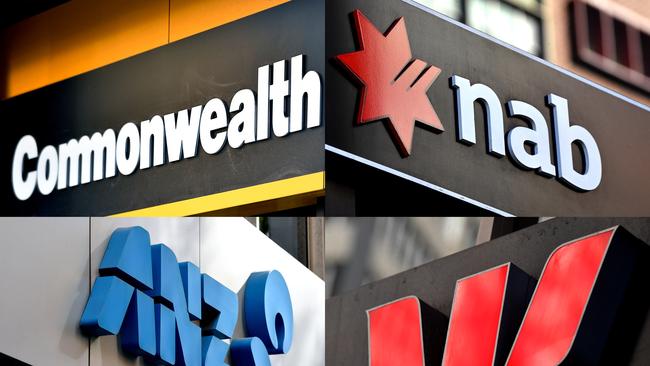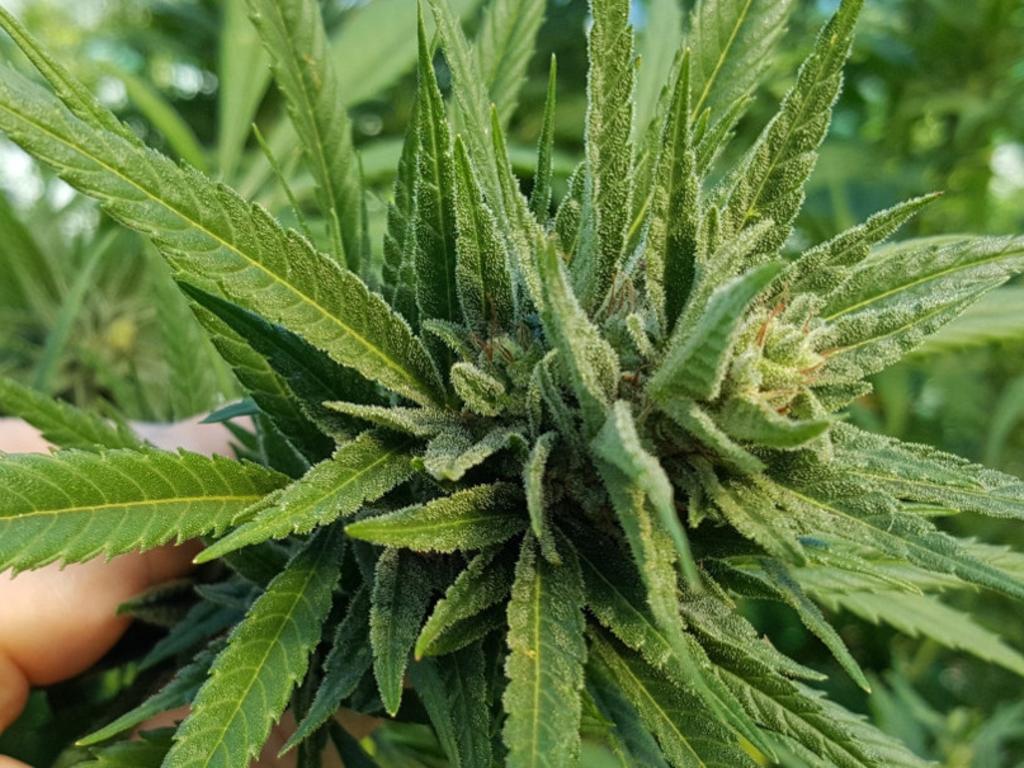Market switches on $19bn bank surge
A $19bn flood into the banking sector led the charge back into unloved shares.

A $19bn flood into the banking sector on Wednesday has led a charge back into shares that have been beaten down by the coronavirus pandemic.
The ASX 200 Banks Index surged 6.8 per cent on Wednesday to be up almost 14 per cent for the week after UBS financial sector analyst Jonathan Mott said he was “more optimistic” about the sector.
Investors also saw value in the energy, real estate, consumer discretionary and building materials sectors, with Santos up 2.9 per cent, Unibail-Rodamco-Westfield up 9 per cent, Stockland up 5 per cent, Harvey Norman up 4.3 per cent, Boral up 7.3 per cent and Reliance Worldwide up 4.7 per cent.
But the broader market was restrained by a pullback in growth and defensive stocks that have accounted for most of a 27 per cent rise in the past two months. CSL lost 6.4 per cent, Fortescue Metals fell 5.1 per cent, Evolution Mining dropped 8.5 per cent and Afterpay dived 7.9 per cent.
“It was all about the banks and rotation out of the best stocks into the stragglers,” said Bell Potter head of institutional sales and trading Richard Coppleson. “The market leaders in 2020 were sold off and used for funding.”
The benchmark S&P/ASX 200 Index slipped 5 points, or 0.1 per cent, to 5775 points after hitting a fresh 11-week high of 5835.9, with caution emerging amid reports that the US was considering sanctions against Chinese officials and companies over China’s proposed Hong Kong security laws.
Growth and defensive stocks have soared since March as unprecedented stimulus from the world’s major central banks and governments fuelled a nascent bull market, driven by rising valuations in stocks that don’t normally depend on economic growth.
That saw the valuation gap between so-called value stocks (those with low prices relative to book value, cash flow or earnings per share) compared to growth stocks (those with high prices relative to valuation measures) blow out to record highs not seen since the global financial crisis of 2008.
Banks were among the worst performers in the value cohort in the past two months, as regulators pressed them to cut dividends and raise capital to shore up balance sheets and boost lending.
Coronavirus lockdowns were expected to cause the worst recession since the Great Depression — including unemployment surging to 10-15 per cent, a 10-20 per cent fall in house prices and a blowout in bad debts that could reduce the ability of banks to pay dividends and potentially force them to raise more capital, which would dilute their earnings and dividends per share.
But investors scrambled to increase their exposure to the sector after Mr Mott said he was “more optimistic on the banks in the near term”, amid a string of positive news and economic reopening.
Authorities have revised down the number of JobKeeper wage subsidy recipients to 3.5 million from 6.5 million, while $10.6bn has been withdrawn from superannuation accounts, helping consumer cash flows, and credit card spend and retail data have started recovering along with home auction clearance rates.
“This is all good news, and with the healthcare outcomes continuing to improve, the outlook for the economy is on the rise,” Mr Mott said. “While we are certainly not out of the woods, the likelihood of a more severe downturn with even larger credit losses and CRWA (capital to risk-weighted assets ratio) pro-cyclicality driving dilutive capital raisings appears less likely in our view.”
Reflecting the improved economic outlook, UBS Australia chief economist George Tharenou upgraded his forecasts for the Australian consumer and economic growth because of a “less-bad” jobs market and faster reopening of the economy.
Mr Tharenou’s June quarter consumption forecast went from minus 9 to minus 7 per cent and his economic growth forecast improved from minus 10 per cent to minus 8.5 per cent. Economic growth this year was now likely to be minus 5.1 per cent rather than minus 6.1 per cent, according to UBS, but 2021 growth is now expected to be 4.6 per cent rather than 5.2 per cent.
The material downward revision of the JobKeeper wage subsidy meant that, while households still face a stimulus “cliff” in the December quarter, there was more room for a further policy response.
Household cash flow
“The JobKeeper revision doesn’t remove the still very likely large negative quarter-on-quarter household cash flow in the December quarter,” Mr Tharenou said.
“However, there seems a rising chance of new direct policy support for housing, such as a first home owners grant; albeit we already assumed this would be required and forthcoming to drive our expected rebound of dwelling commencements from just 130,000 in 2020 to 170,000 in 2021, and limit the decline in home prices to less than 10 per cent.”
While retaining a “neutral” rating on the sector, with ANZ the only bank that he rated a “buy”, Mr Mott said the chance of a “risk-on” re-rating of banks towards their book value could not be ruled out.
“In the event of a ‘V-shaped’ near-term recovery, the market may begin to factor in a shorter credit cycle, with a recovery towards more normal levels by fiscal 2022,” he said.
“If this outlook begins to be priced in, a re-rating back towards book value cannot be ruled out,” he said. Excluding CBA, he estimated that the major banks were trading on a price-to-book value of 0.8 times.








To join the conversation, please log in. Don't have an account? Register
Join the conversation, you are commenting as Logout